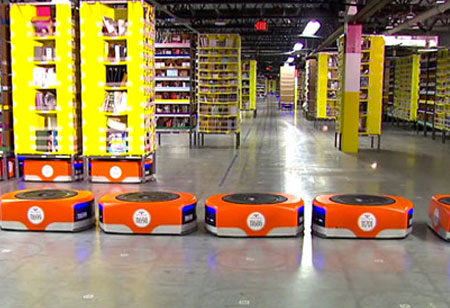THANK YOU FOR SUBSCRIBING
Robot-Driven Warehouses: Next-Gen Supply Chain Management
A few years ago, warehousing operations were manually carried out.

By
Apac CIOOutlook | Thursday, January 01, 1970
Stay ahead of the industry with exclusive feature stories on the top companies, expert insights and the latest news delivered straight to your inbox. Subscribe today.
A few years ago, warehousing operations were manually carried out. Today, however, the warehouses are almost completely automated. Retailers are ramping up their warehouse operations by employing advanced robotic systems. Incorporating robotics will make the picking and packing process smoother and quicker. For example, an online grocery retailer, Ocado, has created a system called the Ocado Smart Platform, a vast grid with hundreds of robots scuttling across it, where robots bring the shelf stacks to human workers, who then pick the right products and package them to be sent out. With constant increase in customer expectations like faster and cheaper delivery, the implementation of automation and robotics to reduce labor is the key driver for retailers. Today, there are many kinds of robots available in all shapes and sizes to help with different warehouse operations including loading, unloading, sorting, picking, transportation, storage, delivery, and audits. In the pickup process, the robotic machines can detect, reach out, grasp, and place items to fulfill an order. For instance, RightHand Robotics, a leader in providing end-to-end solutions for e-commerce, came up with a solution called the RightPick. The solution has the capability to handle thousands of different items using machine learning coupled with a sensorized robotic hand.
While automated robots increase the efficiency in many warehouses, each application needs to be carefully considered and designed to work with the rest of the process flow and operations. Moving forward, advances in AI, sensors, vision systems, and big data, coupled with falling costs, will lead companies around the globe to invest hundreds of millions of dollars in equipment to make the movement of goods quicker, as well as more accurate and efficient.





